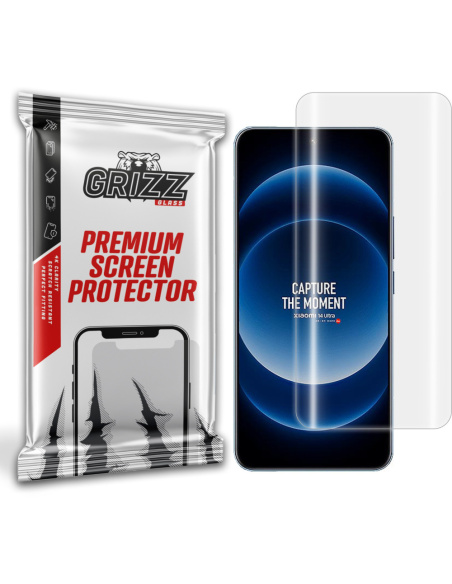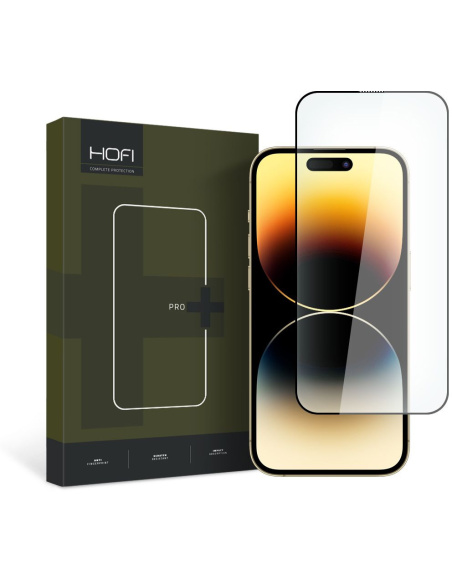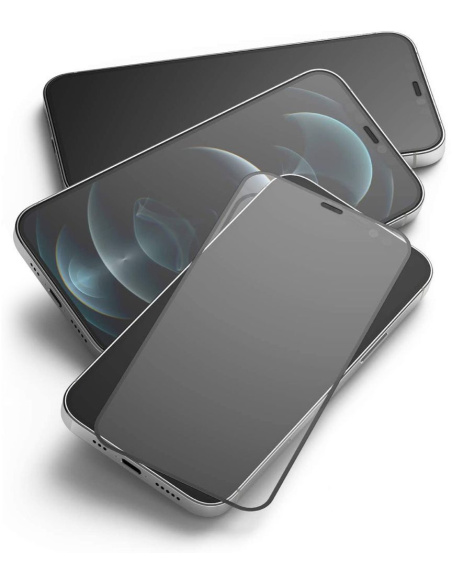Hydrogel film or glass: A comprehensive guide to protecting your smartphone screen
What is hydrogel film and what are its features?
Hydrogel film is a type of protective film, designed to protect smartphone screens from mechanical damage and scratches. Durable hydrogel film is characterized by exceptional resistance to screen scratches and minor mechanical damage. Thanks to its flexible material, the high-quality film is able to absorb minor bumps and scratches, keeping the smartphone screen intact. Unlike traditional tempered glass, the hydrogel film has the ability to self-heal, which means that minor scratches can disappear over time.
How to put on a hydrogel film without air bubbles?
Installation of hydrogel film is relatively simple, but requires precision.
Installation of hydrogel film: step by step
- Screen preparation:
- Thoroughly clean the smartphone screen with a microfiber cloth to remove all dirt and dust.
- Aligning the
- film: fit the hydrogel film to the screen, making sure all the holes are in the right places .
- The aligned hydrogel film should fit snugly on the surface.
- Film Application: Slowly and evenly apply the film to the screen, starting from one end and moving towards the other end .
- Use a smoothing tool to remove air bubbles.
- Final finishing
- :
- Conduct a final smoothing. The matched hydrogel film is perfectly adhered to the screen, without air bubbles, ready for use.
Looking for a universal hydrogel film ? GrizzGlass is a reputable brand specializing in the production of high-quality hydrogel films that offer advanced protection for smartphone screens.
Grizz Hydrofilm is a modern hydrogel film distinguished by its easy installation and airtight packaging thanks to OxyFree Technology. The film is flexible, a perfect fit, will not crack or shatter. It perfectly protects the screen from scratches and bumps, maintaining perfect clarity and not affecting touch functionality. Grizz Hydrofilm strengthens the screen, minimizing the risk of costly and time-consuming display repair. Airtight packaging protects the film from dust and dirt during transport and storage. GrizzGlass products do not interfere with Touch ID or Face ID, ensuring full functionality of the smartphone.
Tempered glass as an alternative to hydrogel film
Although hydrogel film is flexible and self-healing, the resistance of tempered glass provides a higher level of protection. Damage to the screen is much less, making it an ideal choice for robust protection of a smartphone screen.
Characteristics and properties of tempered glass
Tempered glass is a popular solution for protecting smartphone screens, offering exceptional durability and resistance to damage. The properties of tempered glass include its high hardness, which makes it much more resistant to screen scratches compared to protective film. In addition, the properties of tempered glass make it break in a controlled manner, which minimizes the risk of sharp shards and increases user safety. These properties make tempered glass an excellent screen protector against everyday hazards.
Thickness of tempered glass vs. level of protection
The thickness of tempered glass has a direct impact on the level of protection it provides. Normally, the thickness of tempered glass ranges from 0.3 mm to 0.5 mm. The thicker the glass, the higher the level of protection against bumps and falls, however, this can also affect the weight and aesthetics of the device. Thicker tempered glass provides better protection for the smartphone's screen, reducing the risk of damage to the smartphone's display during everyday use.
Tempered glass vs. touch sensitivity on a smartphone screen
One of the most important aspects of using tempered glass is its effect on the touch sensitivity of a smartphone display. High-quality tempered glass is designed not to reduce the sensitivity of the screen, so that the touch response remains fast and precise. A proper tempered glass screen protector ensures that users will not notice any difference in the functioning of the device, making it an ideal choice for those who want to protect their phone's screen without compromising on performance. In addition, the resistance of tempered glass to screen scratches ensures that the phone's screen remains in excellent condition for a long time.
If you are looking for a high-quality tempered glass, pay attention to the Hofi brand, whichspecializes in the production of high-quality glass, including tempered glass. The tempered glass from Hofi is made of lightweight and milled glass with a thickness of 0.3 mm, which does not affect touch sensitivity. It has a hardness level of 9H on a 10-point scale, which gives it exceptional scratch resistance. The glass is crystal clear and coated with an oleophobic coating that minimizes fingerprints and other contaminants, keeping the screen clean.
Advantages and disadvantages of hydrogel film compared to tempered glass
It is worth knowing the advantages and disadvantages of hydrogel film and tempered glass to choose the best protection for your screen. Hydrogel film or tempered glass - which is better?
As a screen protection, hydrogel film is flexible, adapts well to curved screens and self-heals minor screen damage. The disadvantages of hydrogel film are less protection against more serious damage to the phone and the need for more frequent replacement. Tempered glass, on the other hand, offers much better protection against scratches and damage to the phone, thanks to its high hardness and impact resistance. Screen repair is less frequent, as tempered glass effectively protects the screen from serious mechanical damage.
Can the hydrogel film and tempered glass be reattached? The hydrogel film can be re-glued if it is gently removed without damage. It is important to thoroughly clean the surface of the screen before reassembly to ensure that there are no air bubbles and that the film adheres properly. Tempered glass, on the other hand, is not reusable once removed. Once removed, it loses its adhesion properties, which means that it will no longer provide effective protection for the screen.
Other types of screen protection: hybrid glass
What is hybrid glass and what properties does it have?
Hybrid glass is an innovative screen protection that combines the advantages of tempered glass and protective film. Created from a combination of flexible polymer and hard glass, it offers exceptional strength and flexibility.
Hybyrd glass is more resistant to breakage and easier to install than traditional tempered glass. Thanks to the flexible polymer, the hybrid glass fits perfectly on curved screens, increasing its versatility.
While not as hard as tempered glass, hybyrd glass still offers significant scratch resistance for long-lasting display protection. It's thinner and lighter than traditional tempered glass, meaning it doesn't affect the weight or thickness of the device, preserving its original look and feel. In the event of breakage, the hybrid glass does not form sharp shards, minimizing the risk of injury and increasing user safety.
If you haven't heard of the 3mkbrand yet , be sure to familiarize yourself with its products. FlexibleGlass hybrid glass combines the features of a protective film and tempered glass. It is flexible, less prone to breakage, while providing a high level of protection against scratches. With exceptional durability, it can withstand extreme conditions. Very thin, invisible on the screen, does not affect its sensitivity. Simple and intuitive installation ensures quick protection of your smartphone screen. FlexibleGlass is the ideal solution for those who want maximum protection while maintaining full functionality and aesthetics of the device.

Summary
Choosing the right smartphone screen protection comes down to a decision: glass or film? Both protective glass and different types of protective film have their unique advantages. Protective glass offers higher scratch and impact resistance, providing solid protection against mechanical damage. This is an excellent option for those who prioritize the durability and safety of their device.
On the other hand, the features of protective film include flexibility, self-healing and ease of installation, making hydrogel film and flexible film ideal solutions for curved screens and users who value aesthetic appeal and comfort. The decision whether to choose protective glass or protective film should be based on specific screen protection requirements, aesthetic preferences and the mode of use of the smartphone. Regardless of the choice, the key is to ensure adequate screen protection to keep the device in perfect condition for a long time.







Leave a comment